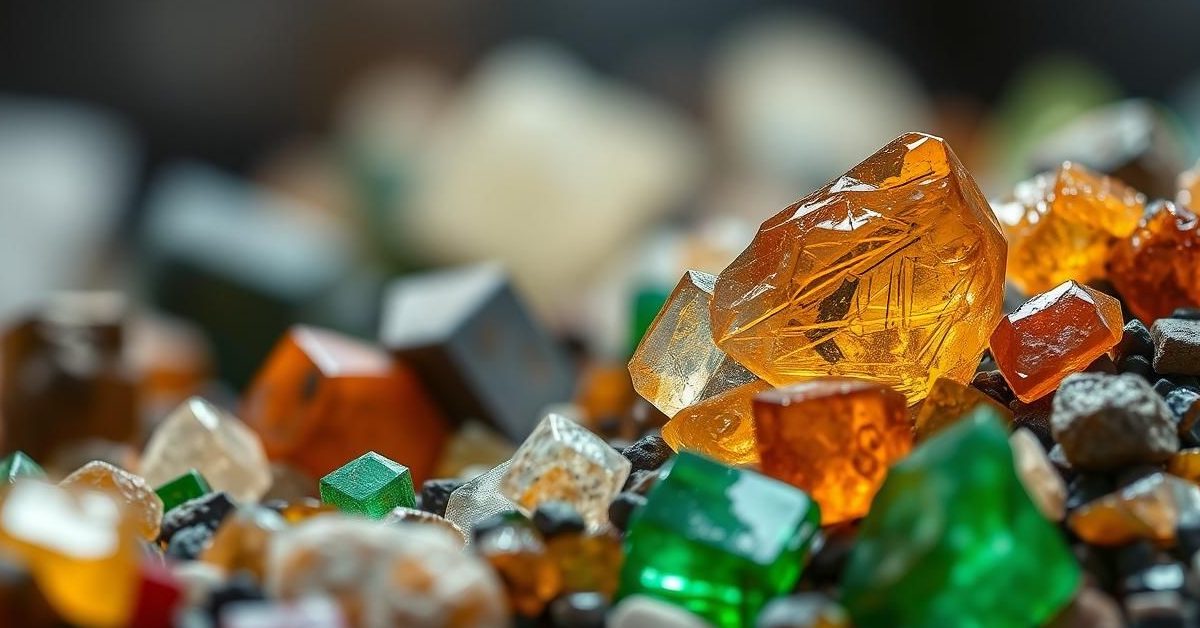Why Critical Minerals are the ‘New Gold’ in a Shifting World Order
In an era defined by rapid technological leaps and an urgent push towards green energy, the very foundations of our modern world are being redefined. We’re talking about critical minerals – the unseen bedrock of everything from your smartphone to electric vehicles, and even the solar panels powering our homes. Often dubbed the “oil of the new world,” these essential elements are at the heart of an escalating geopolitical and economic competition. Understanding this shift isn’t just crucial for global affairs; it’s a vital piece of the puzzle for aspiring civil servants, especially for those navigating the intricate landscape of the UPSC examination.
The Quad’s Bold Stand: A New Front in Resource Security
Recently, the global spotlight shone on Washington, D.C., where the second Quad Foreign Ministers’ Meeting convened. India’s External Affairs Minister, S Jaishankar, joined forces with U.S. Secretary of State Antony Blinken, Australian Foreign Minister Penny Wong, and Japan’s Foreign Minister Takeshi Iwaya. Beyond a unified condemnation of the reprehensible Pahalgam terrorist attack, a significant announcement emerged: the launch of the Quad Critical Minerals Initiative.
This pivotal move signals a collective resolve to tackle one of the most pressing economic and strategic vulnerabilities of our time. It also paves the way for future collaborative ventures, including the first Quad Indo-Pacific Logistics Network field training exercise and the Quad Ports of the Future Partnership, set to be launched in Mumbai. These initiatives underscore the Quad’s expanding mandate beyond traditional security, embracing economic resilience and supply chain fortitude.
Unpacking the Quad’s Strategic Vision
The joint statement from the Quad ministers highlighted a clear strategic focus. Their enduring impact is centered on four core pillars: enhancing maritime and transnational security, fostering economic prosperity and security, advancing critical and emerging technologies, and bolstering humanitarian assistance and emergency response capabilities.
A recurring theme was the profound concern over the “abrupt constriction and future reliability of key supply chains,” particularly for critical minerals. The statement pointedly addressed the “non-market policies and practices” influencing these supply chains – a thinly veiled reference to the dominant role of certain nations. The Quad Critical Minerals Initiative is designed precisely to counter this, emphasizing the urgent need for diversified and reliable global supply networks.
The Peril of Over-Reliance: Why Diversification is Key
Imagine a world where the production of cutting-edge technology could grind to a halt due to the whims of a single supplier. This isn’t a dystopian fantasy; it’s a very real threat posed by an over-reliance on any one country for the processing and refining of critical minerals. As the Quad’s joint statement articulated, such dependence exposes nations to “economic coercion, price manipulation, and supply chain disruptions,” directly threatening both economic and national security.
These minerals are, quite literally, the building blocks of our future. As the Report of the Committee on Identification of Critical Minerals succinctly puts it, they are the “foundation on which modern technology is built.” From the intricate components of semiconductors to the expansive blades of wind turbines and the sophisticated cells of advanced batteries, critical minerals are indispensable. Without secure access to them, the global energy transition – a cornerstone of our climate goals – remains an elusive dream. Dhiraj Nayyar, writing in The Indian Express, eloquently captures this shift, positing that “the long 21st century is going to be the critical minerals age,” succeeding the eras of coal and oil.
China’s Dominance: A Geopolitical Conundrum
The current landscape of critical mineral supply chains reveals a stark reality: overwhelming dominance by a single nation. China, for instance, controls a staggering two-thirds of global rare earths mining. When it comes to processing, China’s grip is even tighter, accounting for approximately 66% of all critical mineral processing, a figure that surges to over 90% for rare earth elements. This unparalleled control means China effectively holds the power to disrupt the global electric vehicle (EV) industry, among others, by simply restricting supply.
Data from the International Energy Agency (IEA) further illustrates this imbalance, showing China’s significant share in the refining of key minerals like nickel (35%), lithium and cobalt (50-70%), and rare earth elements (around 90%). Even in terms of reserves, while the U.S. Geological Survey estimates China holds 44 million metric tons, other significant players like Brazil (21 million metric tons), India (6.9 million metric tons), and Australia (5.7 million metric tons) still lag far behind. This concentration creates a strategic vulnerability for nations striving for technological independence and green energy goals.
India’s Strategic Response: The National Critical Minerals Mission
Recognizing the critical importance of these resources, India has taken decisive steps to bolster its domestic capabilities. In January 2024, the nation launched its ambitious National Critical Minerals Mission, a strategic initiative aimed at achieving self-reliance in this vital sector. As part of this mission, the government identified 30 critical minerals, including lithium, cobalt, nickel, graphite, tin, and copper, as essential for India’s economic development and national security.
With an outlay of Rs 16,300 crore, the Mission seeks to intensify the exploration of critical minerals both within India’s borders and in its offshore territories. It also promises a streamlined regulatory approval process for mining projects, signaling a clear intent to fast-track development. Prime Minister Narendra Modi articulated the mission’s core objectives: to “reduce import dependence, strengthen domestic value chains, and support India’s ‘Net Zero by 2070’ goal.”
However, challenges remain. A 2024 report by the Institute for Energy Economics and Financial Analysis (IEEFA) highlights that while India’s demand for critical minerals is projected to more than double by 2030, domestic mining operations may take over a decade to reach significant production levels. The report suggests pursuing international cooperation, particularly with countries like Mozambique, Madagascar, Brazil, and Tanzania, which are rich in graphite, a crucial mineral for India’s energy ambitions.
India’s commitment to achieving 500 gigawatts (GW) of non-fossil fuel-based electricity installed capacity by 2030 further underscores the urgency. Becoming a member of the Minerals Security Partnership (MSP) in 2023, alongside the new Quad Critical Minerals Initiative, are pivotal steps towards realizing this ambitious commitment and securing India’s energy future.
The Global Alliance: Minerals Security Partnership (MSP)
Beyond the Quad, India’s strategic engagement extends to the Minerals Security Partnership (MSP). India joined this crucial U.S.-led collaboration in June 2023, signaling its commitment to a diversified global critical mineral supply chain. Comprising 14 nations and the European Union, including Australia, Canada, Finland, France, Germany, Japan, Republic of Korea, Sweden, and the United Kingdom, the MSP aims to catalyze public and private investment in critical mineral supply chains worldwide. India’s participation also includes the Minerals Security Finance Network (MSFN).
The MSP primarily focuses on minerals like Cobalt, Nickel, Lithium, and the entire suite of 17 ‘rare earth’ minerals. This alliance is widely seen as a concerted effort to develop a viable alternative to China’s near-monopoly in rare earth processing and its strategic acquisitions of mines, particularly for elements like Cobalt in Africa. The collaboration involves fostering forums for expertise sharing, building robust battery materials supply chains, and even jointly developing mineral processing facilities in regions like South America, highlighting a truly global effort to de-risk the future of technology and energy.















